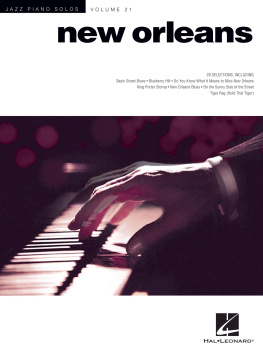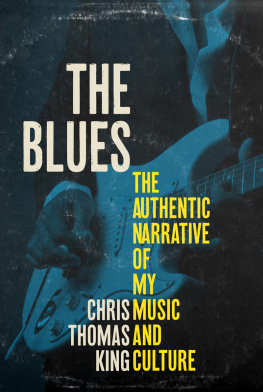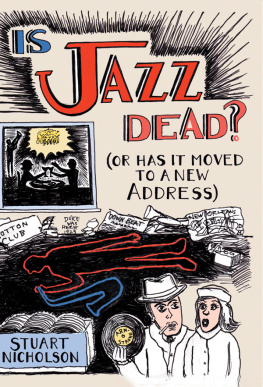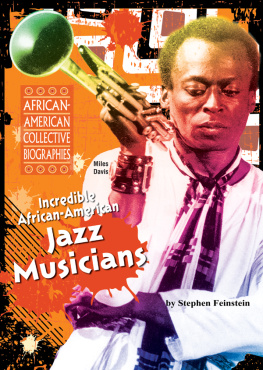New Atlantis
New Atlantis
Musicians Battle for the Survival of New Orleans
JOHN SWENSON


Oxford University Press, Inc., publishes works that further
Oxford Universitys objective of excellence
in research, scholarship, and education.
Oxford New York
Auckland Cape Town Dar es Salaam Hong Kong Karachi
Kuala Lumpur Madrid Melbourne Mexico City Nairobi
New Delhi Shanghai Taipei Toronto
With offices in
Argentina Austria Brazil Chile Czech Republic France Greece
Guatemala Hungary Italy Japan Poland Portugal Singapore
South Korea Switzerland Thailand Turkey Ukraine Vietnam
Copyright 2011 by John Swenson
Published by Oxford University Press, Inc.
198 Madison Avenue, New York, New York 10016
www.oup.com
Oxford is a registered trademark of Oxford University Press.
All rights reserved. No part of this publication may be reproduced,
stored in a retrieval system, or transmitted, in any form or by any means,
electronic, mechanical, photocopying, recording, or otherwise,
without the prior permission of Oxford University Press.
Library of Congress Cataloging-in-Publication Data
Swenson, John.
New Atlantis : musicians battle for the survival of New Orleans / John Swenson.
p. cm.
ISBN 978-0-19-975452-6
1. MusicPolitical aspectsLouisianaNew Orleans. 2. MusicSocial
aspectsLouisianaNew Orleans. 3. MusiciansLouisianaNew Orleans. I. Title.
ML3917.U6S94 2011
780.9763'35dc22 2010041992
9 8 7 6 5 4 3 2 1
Printed in the United States of America
on acid-free paper
By the year 2100, the city of New Orleans may be extinct, submerged in water. A future akin to the fabled sunken city of Atlantis? Yes, according to Dr. Chip Groat, Director of the United States Geological Survey (USGS) in Washington, D.C., With the projected rate of subsidence (the natural sinking of land), wetland loss, and sea level rise, he said, New Orleans will likely be on the verge of extinction by this time next century.
From the University Of New Orleans Science Daily,
January 21, 2000 (New Orleans)
CONTENTS
New Atlantis
CHAPTER
Voice of the Wetlands
Mother Nature smiled on New Orleans during the first week of 2005. The trees still held an autumnal glow as the temperature hovered around the midseventies with only a smattering of rain. It was warm enough that the icy waters from the north surging down the Mississippi created spectacular fog banks at night, fog so thick it turned the citys New Years Eve fireworks display into a pastel haze. Captains on the river tugboats said it was the worst fog in ten years.
Having grown up in Brooklyn, New York, I was really enjoying such magnificent January weather. The streets of New Orleans were filled with revelers as the New Year celebrations spilled over into the beginning of the carnival season, which would climax on Fat TuesdayMardi Gras.
But not everyone was out on those streets enjoying themselves. Down the block from my house on Piety Street in the downtown New Orleans neighborhood of Bywater, engineer and producer Mark Bingham was hunkered down at his place of business, Piety Street studios, fine-tuning preparations for a recording session that would set the tone for 2005. The only barometers Bingham and assistant engineer Wesley Fontenot were paying attention to were the ones measuring what was going on inside the buildings thick walls.
Several of the most notable bandleaders in New Orleans had come to the cavernous white stucco building at 728 Piety Street for what amounted to a summit meeting of Louisiana music superheroes. Tab Benoit, Dr. John, Cyril Neville, Monk Boudreaux, Anders Osborne, George Porter Jr., Johnny Vidacovich, Johnny Sansone, and Waylon Thibodeaux were joining forces to combat an insidious enemy that was destroying Louisianas wetlands and threatening the future of New Orleans. The group planned to educate the public about the dangers posed by erosion of the regions wetlands with a recording that at once extolled the areas natural beauty and warned of its vulnerability to the encroaching Gulf of Mexico. They called themselves the Voice of the Wetlands All-Stars.
The project came about after Benoit, a Cajun blues guitarist and vocalist, decided to use his musical talents to campaign for the preservation of the Louisiana wetlands. Rueben Williams, Benoits manager, assembled the band, but when the group arrived at Piety Street, no one was sure what would happen. The day the sessions started, Williams picked up Monk Boudreaux at his home on Valence Street and drove him to the studio. Monk, dressed casually and wearing his ever-present canvas rain cap with the brim turned down, looked without comment at the enormous studio, studied the brown and white tin ceilings of its thirty-foot-high vaulted roof, then took a seat on the torn leather couch in the control room of Studio A and waited. Though Boudreaux is not big or tall, his taciturn demeanor and African Indian creole features lend him a quiet power befitting his status as a former chief of the Wild Magnolias and the current big chief of the Golden Eagles Mardi Gras Indians. However, Monks most dramatic quality offstage is his presence. He can say more with the determined look on his face than most people can with a two-hour speech.
Bingham, whose wit, love of philosophical exchange, and unvarnished gift for gab runs to the opposite extreme, knew that Boudreaux would be a key element of this recording. Binghams first New Orleans project was a 1982 remote recording of a Mardi Gras Indian practice at the H&R Bar. This historic session caught Monk in action at a time when these Sunday-night sessions were still part of what was essentially a secret society, so Bingham was well aware of how Monk Boudreaux worked. He didnt have to discuss strategy or give directions. When the music was right, Monk would begin his spontaneous declamations and cause a kind of spiritual transformation in the room.

Figure 1. 728 Piety Street. Behind these modest doors New Orleans musicians are reviving the citys legendary sound. Photo by John Swenson. Used by permission of John Swenson.
Bingham opened Piety Street the weekend before 9/11. The huge building at the corner of Piety and Dauphine bears the inscription Leonhard 1927 on its faade. Leonhard owned the whole block, including a dry cleaner and the Bargain Center grocery store up Dauphine Street. He leased what is now the studio space to the federal government; until 1980 the building served as the Bywater post office. After that it became the Louisiana Center for Retarded Citizens, an organization whose mail is still delivered at the building. Bingham quickly built a reputation at Piety, where he recorded Dr. John, Vida Blue, the Black Eyed Peas, Nick Lowe, Less than Jake, 12 Stones, Superjoint Ritual, Dr. Michael White, Jon Cleary, Ryan Adams, and John Gros.
Williams and Bingham chatted as the band members started arriving. Benoit drove in from the bayou near Houma, where he had grown up. With his short brown hair, well-kempt beard-and-moustache combo, and easy smile, the strong-shouldered Benoit exuded Cajun-country charm as he greeted his colleagues. Tab, have you got any songs written? Williams joked, knowing full well that Benoit liked to work spontaneously.
Next page










